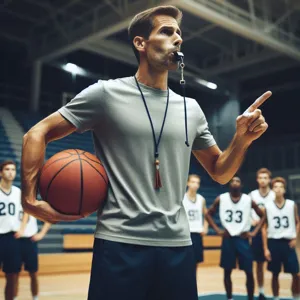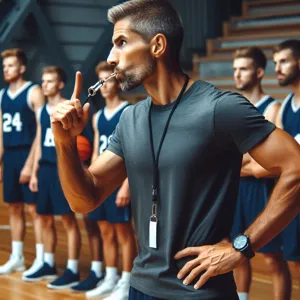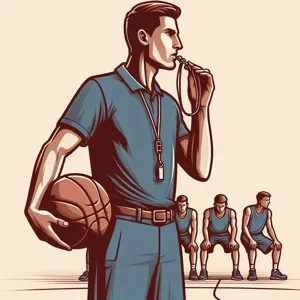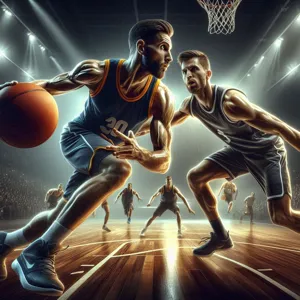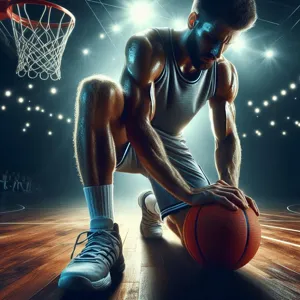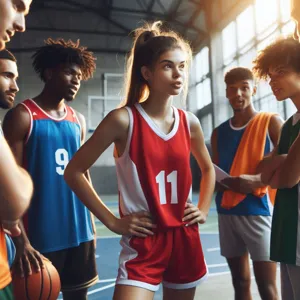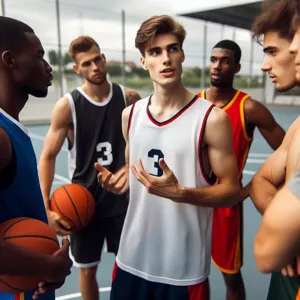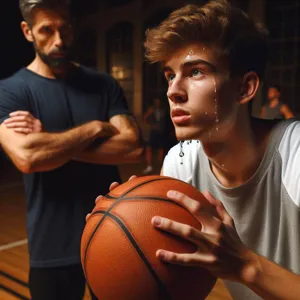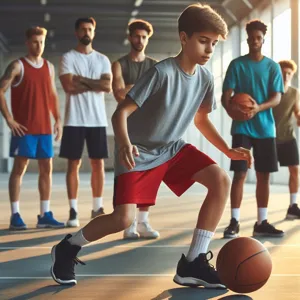In the age of digital entertainment, catching your favorite basketball games from the comfort of your home—or on the go—has never been easier.
Whether you’re a die-hard fan of the NBA, a college basketball enthusiast, or simply enjoy the thrill of fast-paced action, knowing how to stream games online can transform your viewing experience. However, with a plethora of options available, it can be overwhelming to navigate through various platforms, subscriptions, and services to find the best fit for your needs. That’s why we’ve crafted “The Ultimate Guide to Streaming Basketball Games Online.” In this comprehensive resource, we’ll delve into the top platforms, tips for accessing live streams, and the essential tools you need to ensure you never miss a buzzer-beater again. Get ready to elevate your game-watching experience and immerse yourself in the exhilarating world of basketball, all from your favorite screen!
1. Introduction to Streaming Basketball Games

In the age of digital entertainment, the thrill of watching basketball games has transcended traditional broadcasting methods, offering fans the opportunity to stream their favorite teams and players from virtually anywhere. Whether you’re a die-hard NBA enthusiast, a college basketball supporter, or simply someone who enjoys the energetic pace of the game, understanding how to effectively stream basketball games online is essential for an engaging viewing experience.
Streaming basketball games online not only provides flexibility in when and where you watch but also opens up access to a broader range of games that might not air on local television. With just a few clicks, you can immerse yourself in the excitement of live matches, catch up on highlights, and even explore in-depth analyses from expert commentators.
However, navigating the world of online streaming can be overwhelming, especially with the multitude of platforms, subscriptions, and live options available. This guide aims to demystify the process, offering you an easy-to-follow roadmap to access basketball games, understand the tools and subscriptions you may need, and ensure you never miss a slam dunk or buzzer-beater again. So, whether you’re at home on your couch or on the go, get ready to elevate your basketball viewing experience to new heights!
2. Understanding the Different Streaming Options
In the ever-evolving landscape of online basketball streaming, understanding the different options available to you is crucial for maximizing your viewing experience. With a variety of platforms and services catering to basketball enthusiasts, it’s essential to evaluate which option aligns best with your preferences, budget, and viewing habits.
First and foremost, consider traditional cable streaming services. These platforms, like Hulu + Live TV, YouTube TV, and Sling TV, offer live broadcasts of games, allowing you to catch all the action as it unfolds. They often include major sports networks such as ESPN, TNT, and NBA TV in their packages, ensuring you won’t miss a moment of the season. However, these services typically require a monthly subscription and may come with regional restrictions, so be sure to check if your local teams are included.
For those who prefer a more cost-effective solution, there are numerous free streaming options available online. Websites such as Reddit and various sports forums often share links to live streams, but be cautious—these can be unreliable and may infringe on copyright laws. Additionally, the quality of these streams can vary significantly, often leading to buffering issues or subpar video clarity.
Another popular choice has emerged with the rise of specialized sports streaming services, such as NBA League Pass. This subscription-based service allows fans to stream live and on-demand games, offering features like multi-game viewing and access to archived matchups. While this is a fantastic option for die-hard fans wanting to follow their favorite teams across the league, it may not be the best choice if you’re interested in watching only specific games or teams, especially if those games are broadcasted on national television.
Lastly, don’t overlook the power of social media platforms. Apps like Facebook and Twitter occasionally offer live streaming of games, particularly special events or playoff matches. While this option may not provide comprehensive coverage, it’s worth keeping an eye on these platforms for unexpected streaming opportunities.
By understanding these different streaming options, you can select the best method to watch basketball games online, ensuring you stay connected to your favorite teams and players throughout the season. Whether you’re a casual viewer or a dedicated fan, the right streaming solution is out there waiting for you!
3. Legal vs. Illegal Streaming: What You Need to Know

When it comes to streaming basketball games online, understanding the distinction between legal and illegal streaming options is crucial. Not only does this knowledge help you enjoy the game without the risk of legal repercussions, but it also ensures that you are supporting the teams and players you love.
**Legal streaming** refers to platforms and services that have obtained the necessary rights to broadcast games. These include popular services like NBA League Pass, ESPN+, and various cable providers that offer streaming options for their subscribers. When you choose legal streaming, you’re guaranteed high-quality video, reliable service, and access to live stats and commentary. Plus, many of these services offer additional features like DVR capabilities, allowing you to pause, rewind, or catch up on games you missed.
On the other hand, **illegal streaming** typically involves websites or platforms that broadcast games without licensing or rights. While these sites might seem tempting due to free access or no subscription fees, they often come with significant downsides. The quality can be poor, with frequent buffering or interruptions, and the risk of malware is higher, as many illegal streaming sites are riddled with intrusive ads and harmful software. Furthermore, accessing illegal streams can lead to potential legal issues, including fines or even charges against you.
In today’s digital age, it’s essential to make informed choices about how you consume sports content. By choosing legal streaming channels, you support the integrity of the sport, contribute to the ecosystem that allows teams to thrive, and enhance your own viewing experience. So before you click on that enticing link for free access, remember the value of choosing the right path for your basketball-watching experience.
4. Top Streaming Services for Basketball Fans
When it comes to catching every exciting moment of basketball action, choosing the right streaming service can make all the difference. With a variety of platforms available, each offering unique features and access to different leagues and games, it’s essential to find the one that best fits your viewing preferences. Here are some of the top streaming services for basketball fans that you should consider:
1. **NBA League Pass**: For the die-hard basketball enthusiast, NBA League Pass is a dream come true. This subscription service allows you to watch live and on-demand games from every team in the league. With options to choose specific teams or the entire league, fans can enjoy comprehensive coverage, including playoffs and the Finals. Plus, the service offers classic games and behind-the-scenes footage, making it a treasure trove for any basketball aficionado.
2. **ESPN+**: If you’re looking for a versatile streaming option that covers more than just basketball, ESPN+ is a fantastic choice. This service provides access to a variety of live sports, including NBA games, college basketball, and exclusive shows. Its user-friendly interface and high-definition streaming make it easy to navigate, while its affordable subscription model brings you the latest sports action without breaking the bank.
3. **Hulu + Live TV**: For those who enjoy a mix of live TV and on-demand content, Hulu + Live TV is an excellent option. This service includes access to channels like ESPN, TNT, and ABC, where many basketball games are broadcast. Additionally, Hulu’s extensive library of shows and movies makes it a perfect fit for families or fans who want a little more variety in their entertainment.
4. **YouTube TV**: Known for its robust channel lineup, YouTube TV is another great pick for basketball lovers. With access to major networks that air NBA games, including ESPN, TNT, and ABC, it provides a comprehensive viewing experience. Plus, the unlimited DVR feature allows you to record games and watch them at your convenience, ensuring that you never miss a buzzer-beater.
5. **FuboTV**: If you’re passionate about sports and want extensive coverage, FuboTV is the way to go. With a focus on live sports, this streaming service offers a plethora of channels that broadcast basketball games, including NBA and NCAA tournaments. FuboTV also boasts features like cloud DVR and a user-friendly interface, making it easy to catch your favorite games live or on-demand.
Each of these streaming services offers unique features and benefits, catering to different preferences and viewing habits. Depending on your specific needs—be it a love for in-depth coverage, flexibility, or additional entertainment options—there’s a streaming service out there to ensure you never miss a moment of the action on the court. So grab your popcorn, settle into your favorite spot, and get ready to cheer for your team with the ultimate basketball streaming experience!
5. How to Access Local and National Games
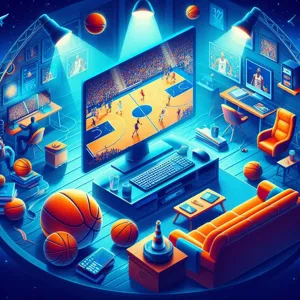
Accessing local and national basketball games online is easier than ever, thanks to a variety of streaming services and platforms. Whether you’re a die-hard fan wanting to catch every game or a casual viewer looking to tune in to your favorite team, knowing where and how to watch is crucial. Here’s a breakdown of the best resources available to ensure you never miss a moment of the action.
First, consider cable alternatives like YouTube TV, Hulu + Live TV, or Sling TV. These platforms offer packages that include local sports networks, allowing you to stream games live as they air. You can easily filter through the available channels to find those that broadcast your local NBA or college games.
For national games, services like ESPN+ and NBA League Pass are fantastic options. ESPN+ gives you access to a wide range of games featuring marquee matchups and playoff contests, while NBA League Pass offers an extensive catalog of live and on-demand games, enabling you to follow your favorite teams no matter where you are. With League Pass, you can also customize your viewing experience by choosing to watch specific teams or follow game highlights.
If you’re keen on keeping it budget-friendly, check if local broadcasts are available on platforms like Locast, which offers free streaming of local channels in select areas. Additionally, many teams have their own apps or websites that stream games or provide links to where they can be viewed online.
Lastly, don’t overlook social media platforms. Many leagues and teams share live updates, highlights, and even full games on platforms like Twitter, Facebook, and Instagram. These platforms can serve as a supplementary way to stay connected with the action, especially for those who might miss a live broadcast.
By utilizing a combination of these resources, you can create a tailored viewing experience that keeps you engaged with both local and national basketball games. So grab your snacks, settle into your favorite chair, and get ready to enjoy the thrill of the game, no matter where you are!
6. Using Game Passes and Subscriptions Effectively
When it comes to streaming basketball games online, understanding how to utilize game passes and subscriptions can greatly enhance your viewing experience. With a plethora of options available, it’s essential to choose the right service that aligns with your needs and preferences. Game passes, such as the NBA League Pass, offer fans access to live games, replays, and exclusive content, all in one convenient package. This means that, no matter where you are, you can catch every slam dunk, buzzer-beater, and highlight reel play from your favorite teams.
To maximize the value of your subscription, take advantage of the free trial periods many services offer. This allows you to test the platform, assess the streaming quality, and explore additional features like multi-game viewing and mobile access—all without committing financially. If you find yourself primarily interested in specific teams or matchups, consider regional sports networks that provide game-day coverage without the full package commitment.
Furthermore, don’t overlook promotional deals that might include discounted rates for long-term subscriptions or bundled services that give access to multiple sports. Engaging with fan communities online can also provide insights on sharing accounts or accessing alternative streams, keeping you in the loop without breaking the bank.
By making informed choices about your game passes and subscriptions, you can enjoy seamless access to all the basketball action you crave, ensuring you never miss a moment of the excitement. Whether you’re cheering from home or on the go, the right streaming strategy will keep you connected to the game you love.
7. Devices You Can Use to Stream Basketball Games
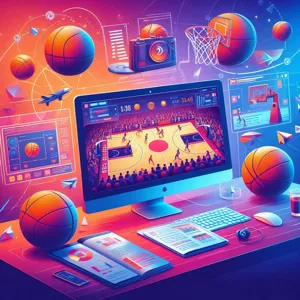
In today’s digital age, there is no shortage of devices available for streaming basketball games, making it easier than ever to catch your favorite teams in action, no matter where you are. Understanding the variety of devices at your disposal can enhance your viewing experience and provide flexibility in how and when you watch the game.
**Smart TVs**: One of the most popular choices for streaming basketball games is a smart TV. With built-in apps like ESPN, Hulu, or YouTube TV, you can easily access live games directly from your television screen. Many smart TVs also support casting from your mobile device, allowing you to send the game from your phone or tablet to the big screen with just a few taps.
**Streaming Devices**: If you don’t have a smart TV, no problem! Devices such as Roku, Amazon Fire Stick, and Apple TV offer seamless streaming capabilities. Simply plug the device into your TV’s HDMI port, connect it to your Wi-Fi, and you’ll have access to a plethora of sports streaming services. These devices often come with user-friendly interfaces and voice-activated controls, making it easy to find and watch live games.
**Laptops and Desktops**: For a more traditional viewing experience, laptops and desktop computers are always a reliable option. With a stable internet connection, you can access a wide range of streaming platforms through web browsers. This option not only allows for larger screens but also for multitasking—perfect for those who like to keep an eye on stats or engage in live chats while watching the game.
**Tablets and Smartphones**: In our on-the-go society, tablets and smartphones have become essential for streaming basketball games. With dedicated apps from your favorite sports networks, you can watch live games anytime, anywhere. Whether you’re commuting, at work, or lounging at home, simply pull out your device, connect to the internet, and dive into the action. Plus, many streaming services allow you to cast your screen to a larger display, giving you the best of both worlds.
**Gaming Consoles**: Don’t forget about gaming consoles! If you own a PlayStation or Xbox, you can use these devices to stream basketball games as well. Many sports streaming apps are available for download on these platforms, allowing you to watch games while enjoying your favorite video games.
By leveraging these various devices, you can tailor your basketball-watching experience to fit your lifestyle and preferences. Whether at home or on the go, staying connected to the fast-paced world of basketball has never been easier. So, gear up, grab your device of choice, and get ready to cheer on your favorite teams from wherever you are!
8. Tips for Improving Streaming Quality
When it comes to streaming basketball games online, the last thing you want is a choppy feed or pixelated images that ruin the excitement of the game. Improving your streaming quality is essential for an enjoyable viewing experience, and there are several strategies you can implement to ensure you catch every dunk, three-pointer, and buzzer-beater in crystal-clear clarity.
First and foremost, a robust internet connection is the foundation of smooth streaming. Aim for a minimum download speed of 5 Mbps for standard definition and at least 25 Mbps for high definition. If you’re unsure about your connection’s speed, consider running a speed test to gauge whether your current plan meets these requirements. If your speed falls short, upgrading your internet plan or switching to a provider with better bandwidth can make a world of difference.
Next, consider your router’s positioning. Ideally, your Wi-Fi router should be centrally located in your home, free from obstructions. Walls, furniture, and even appliances can interfere with the signal strength. If you’re streaming from a considerable distance, or if multiple devices are connected to the same network, you might experience lag. In such cases, consider investing in a Wi-Fi extender or a mesh network system to boost coverage throughout your space.
Additionally, using an Ethernet cable to directly connect your streaming device to your router can provide a more stable and faster connection than Wi-Fi. This is especially beneficial for streaming high-definition content, as it minimizes latency and buffering issues.
Lastly, keep your streaming device updated. Whether you’re using a smart TV, a streaming stick, or a gaming console, ensuring that your software is up to date can enhance performance and fix any glitches that may affect streaming quality. Clearing the cache and closing unused applications can also free up resources, allowing your device to focus solely on delivering the game you’re eager to watch.
By implementing these tips, you can enjoy a seamless streaming experience that keeps you engaged in the heart-pounding action of basketball games, no matter where you are. With improved quality, you won’t miss a moment of the game, making every dunk and three-pointer even more thrilling to watch!
9. Navigating Regional Blackouts: Workarounds and Solutions
Navigating regional blackouts can be one of the most frustrating aspects of streaming basketball games online, but understanding the reasons behind them and knowing how to work around these restrictions can significantly enhance your viewing experience. Regional blackouts typically occur due to broadcasting rights agreements; networks often hold exclusive rights to air games in specific regions, meaning that even if you have a subscription to a streaming service, you may find yourself unable to access certain games based on your geographical location.
Fortunately, there are several effective workarounds and solutions to help you bypass these restrictions. One of the most popular methods is the use of a Virtual Private Network (VPN). By connecting to a server in a different location—ideally one where the game is available—you can mask your actual location and gain access to the live stream as if you were in that region. This not only allows you to enjoy the game without interruption but also provides a layer of privacy while browsing online.
Another option is to explore streaming services that offer regional coverage without blackouts. Some services provide special packages that include games typically subject to regional restrictions. Be sure to do your research and compare different platforms, as they may have varying agreements with leagues and networks that could affect your viewing options.
Additionally, consider utilizing social media and sports forums to stay updated on alternative streams. Fans often share links to live broadcasts, especially for high-stakes games or rivalries. Just keep in mind that while these options may be available, the quality and legality of these streams can vary, so exercise caution.
Lastly, if you’re a true basketball aficionado, investing in an over-the-air antenna could be a game changer. Many local games are broadcast via local networks, and an antenna can help you capture these signals, allowing you to watch games without the hassle of online restrictions.
By employing these strategies, you can ensure that regional blackouts won’t keep you from enjoying your favorite basketball games, allowing you to cheer for your team no matter where you are!
10. Free vs. Paid Streaming: Pros and Cons
When it comes to streaming basketball games online, one of the most significant decisions you’ll face is whether to opt for free streaming services or invest in paid subscriptions. Each choice comes with its own set of advantages and disadvantages, which can impact your viewing experience significantly.
### Free Streaming
**Pros:**
– **Cost-Effective:** The most obvious benefit of free streaming is that it doesn’t cost you anything. This is perfect for casual fans who want to catch a game without a financial commitment.
– **Accessibility:** Many free streaming platforms are easily accessible on various devices, allowing you to tune in from your smartphone, tablet, or computer with minimal hassle.
**Cons:**
– **Quality and Reliability:** Free streams often suffer from lower video quality and frequent interruptions. You may encounter lagging, buffering, or even the dreaded “stream not available” message, especially during high-demand games.
– **Limited Options:** Free services may not cover all the games or leagues you want to watch, leaving you frustrated when your favorite teams aren’t featured.
– **Ad Overload:** Many free platforms rely heavily on advertisements to sustain their services, which can detract from the viewing experience and disrupt the flow of the game.
### Paid Streaming
**Pros:**
– **Superior Quality:** Paid streaming services typically offer higher resolution broadcasts, ensuring you can enjoy every dunk and three-pointer in crystal-clear detail. They also tend to be more reliable, with fewer interruptions and buffering issues.
– **Comprehensive Coverage:** With a subscription, you gain access to a wider range of games, including exclusive matchups and out-of-market games that you might miss on free platforms. This is especially beneficial for die-hard fans who want to follow their team through the entire season.
– **Additional Features:** Many paid services come with added perks, such as DVR capabilities, multiple camera angles, and in-depth analytics, enhancing your overall viewing experience.
**Cons:**
– **Cost:** The most significant drawback of paid streaming is the subscription fee. Depending on the service, this can add up over time, especially if you subscribe to multiple platforms.
– **Commitment:** Some paid services require longer-term commitments or contracts, which might not be ideal for casual viewers who only want to watch sporadic games.
Ultimately, the choice between free and paid streaming comes down to how often you watch basketball, the level of quality you desire, and your budget. Whether you’re a die-hard fan or a casual observer, understanding the pros and cons of each option will help you make an informed decision that enhances your basketball-watching experience.
11. Popular Social Media Platforms for Live Updates
In today’s fast-paced digital landscape, social media platforms have become indispensable for sports enthusiasts seeking real-time updates and engagement during basketball games. These platforms not only provide live scores and highlights but also foster a sense of community among fans, making them essential resources for anyone looking to stay connected with their favorite teams and players.
**Twitter** is arguably the go-to platform for live updates. With its fast-paced nature and character limit encouraging succinct commentary, you can follow official team accounts, sports news networks, and dedicated basketball analysts for instant updates, play-by-play commentary, and even fan reactions. Using hashtags related to the game or specific players can enhance your experience, allowing you to join conversations and see what fellow fans are saying in real time.
**Instagram** is another vibrant platform for basketball fans. While it may not provide live scores directly, it excels in delivering visual content. Follow your favorite players and teams for behind-the-scenes action, game highlights, and stunning photography that captures the emotion of the game. Instagram Stories often feature live updates, making it easy to stay in the loop while enjoying the visual flair that the platform offers.
**Facebook** also plays a significant role in the social media landscape for live updates. Many sports pages host lively discussions, share articles, and post live video streams of games. Joining fan groups dedicated to your favorite teams can provide a space for in-depth analysis, shared experiences, and real-time updates from fellow enthusiasts.
Finally, **TikTok** has emerged as a surprising contender in the sports conversation. With its short, engaging videos, fans can enjoy quick highlights, fun reactions, and even game breakdowns from content creators passionate about basketball. The platform’s algorithm also curates content based on user interests, ensuring you see the most relevant updates.
By leveraging these popular social media platforms, you can immerse yourself in the basketball community, ensuring you never miss a beat when it comes to live game updates. Whether you’re at home or on the go, these resources provide a dynamic way to stay connected to the thrilling world of basketball, keeping the excitement alive long after the final buzzer sounds.
12. Utilizing Sports Apps for Game Alerts and Highlights
In today’s fast-paced digital world, staying connected to your favorite basketball games has never been easier, thanks to a myriad of sports apps designed to deliver real-time updates and highlights straight to your device. Utilizing these sports apps not only keeps you informed about live scores and upcoming matches but also enhances your overall viewing experience, making it an invaluable resource for any basketball enthusiast.
Imagine being at work or on the go, when suddenly your phone buzzes with an alert about a last-minute buzzer-beater or an unexpected trade. With apps like ESPN, Bleacher Report, and the NBA’s official app, you can customize notifications to receive updates on specific teams, players, and games that matter most to you. These alerts ensure that you never miss a thrilling moment, no matter where life takes you.
But it doesn’t stop at alerts. Many sports apps offer a treasure trove of highlights that capture the essence of the game in just a few seconds. After a long day, you can easily scroll through jaw-dropping dunks, game-winning shots, and crucial plays that define the match. This means you can quickly catch up on what you missed without having to sit through an entire game, making it an efficient way to stay engaged with the sport.
Additionally, some apps provide in-depth analysis, statistics, and commentary, enriching your understanding of the game. Whether you want to dissect a player’s performance or follow your team’s journey through the playoffs, these features allow you to delve deeper into the basketball universe, elevating your fandom to new heights.
Incorporating sports apps into your basketball routine not only keeps you updated but also fosters a sense of community. Many platforms offer user forums and social sharing options where you can discuss game highlights, share your opinions, and connect with fellow fans. This interactive element can enhance your enjoyment and create lasting connections with other basketball lovers.
In short, by utilizing sports apps for game alerts and highlights, you can transform your basketball viewing experience. You’ll stay informed, engaged, and ready to cheer for your favorite teams, ensuring that you’re always part of the action, no matter where you are.
13. Viewing on Multiple Devices: A Complete Guide
In today’s fast-paced world, the ability to watch basketball games on multiple devices is a game-changer for fans who want to catch every slam dunk, buzzer-beater, and highlight reel moment. Whether you’re at home on your couch, commuting to work, or waiting in line for coffee, the flexibility of streaming games on various devices ensures you never miss a beat. Here’s how to make the most of your viewing experience across different platforms.
**Smart TVs and Streaming Devices:** If you love watching games on the big screen, smart TVs and streaming devices like Roku, Apple TV, or Amazon Fire Stick are your best bet. Most streaming services offer dedicated apps that let you access live games directly from your television. Simply download the app for your chosen streaming service, log in, and you’re ready to cheer on your team from the comfort of your living room.
**Tablets and Smartphones:** For those moments when you’re on the go, tablets and smartphones provide a convenient way to stay connected to the action. Many streaming platforms have mobile apps that allow you to watch games live or catch up on highlights. Just make sure you’re connected to Wi-Fi or have a robust data plan to avoid interruptions during intense moments in the game.
**Laptops and Desktops:** If you prefer a more traditional setup, watching games on your laptop or desktop can offer a larger view and the option to multi-task. Most streaming services can be accessed through their websites, allowing you to enjoy games while also engaging in online discussions or checking stats. Be sure to use a reliable browser and consider using an ad blocker to enhance your viewing experience.
**Casting and Mirroring:** Want to combine the best of both worlds? Consider using casting or screen mirroring options. Devices like Chromecast allow you to stream from your mobile device to your TV, so you can enjoy the game on a bigger screen without needing a dedicated app. Similarly, AirPlay lets Apple users wirelessly mirror their devices to compatible TVs.
**Choosing the Right Streaming Service:** As you set up your multi-device viewing strategy, make sure to choose a streaming service that offers the games you want to watch. Some services may have regional restrictions, so do a bit of research to ensure you’re selecting the right platform that covers your favorite teams and leagues.
By utilizing these various devices and methods, you can create a seamless viewing experience for basketball games no matter where you are. This flexibility not only enhances your enjoyment of the sport but also keeps you connected to the exhilarating world of basketball, ensuring that every jump shot and fast break is just a click away!
14. Community and Fan Engagement During Live Streams
In the world of streaming basketball games, community and fan engagement during live streams have become crucial elements that can elevate the viewing experience far beyond just watching the game. Engaging with fans in real time not only fosters a sense of belonging but also transforms casual viewers into passionate supporters of your brand or channel.
Imagine tuning into a live basketball game where the atmosphere is electric, not just on the court but in the chat box as well. As the game unfolds, viewers are discussing plays, sharing their thoughts on player performances, and even debating controversial calls. Platforms like Twitch and YouTube have integrated chat features that allow fans to interact not only with each other but also with the commentators, creating a vibrant dialogue that enhances the excitement of the game.
To maximize engagement, consider incorporating polls and surveys during the stream. For instance, ask viewers who they think will be the MVP of the game or their predictions on the final score. This not only keeps the audience involved but also encourages them to stay tuned throughout the game. Additionally, responding to comments and questions in real-time can make viewers feel valued and heard, fostering a loyal community that will return for future streams.
Furthermore, leveraging social media to complement your live streams can amplify engagement. Encourage fans to share their game-day experiences, predictions, and reactions on platforms like Twitter and Instagram using a unique hashtag. This creates a larger conversation around your stream, enticing even more fans to join in.
By prioritizing community and fan engagement, you not only enhance the live streaming experience but also cultivate a dedicated fan base that will keep coming back for every game, eager to be a part of the action. In the ever-competitive landscape of online sports streaming, this sense of community can set your channel apart and ensure that your audience remains engaged long after the final buzzer sounds.
15. Conclusion: Finding the Best Resources for Streaming Basketball Games
In conclusion, navigating the world of streaming basketball games online can be an exciting yet overwhelming experience. With an abundance of options available, it’s crucial to identify the best resources that fit your viewing preferences, budget, and desired level of accessibility. From official league broadcasts to third-party streaming services, each resource offers unique features that cater to different types of fans.
As you embark on your streaming journey, consider factors such as subscription costs, availability of local games, and the quality of the streaming service. Whether you’re a die-hard NBA follower or a fan of college basketball, finding a reliable and convenient way to catch your favorite teams in action is essential.
Additionally, staying informed about the latest updates, such as changes in broadcast rights or new streaming platforms, will help you make the most of your viewing experience. Engage with fellow fans through forums and social media to share insights and recommendations that could enhance your access to the games.
Ultimately, the key to enjoying basketball streaming lies in flexibility and exploration. Don’t hesitate to try out different platforms and services until you find the perfect combination that keeps you cheering for your teams in real-time. With the right resources at your fingertips, you’ll never miss a buzzer-beater or a game-winning shot again. Happy streaming!
As we wrap up our ultimate guide to streaming basketball games online, we hope you feel empowered to catch every slam dunk and buzzer-beater, no matter where you are. With the wealth of resources and platforms we’ve discussed, from official streaming services to community forums, you now have the tools to enhance your viewing experience and never miss a moment of the action. Whether you’re a die-hard fan or a casual viewer, these insights will help you navigate the online landscape and enjoy the thrill of the game with friends and family. So grab your snacks, settle into your favorite spot, and get ready to cheer for your team like never before. Happy streaming!





